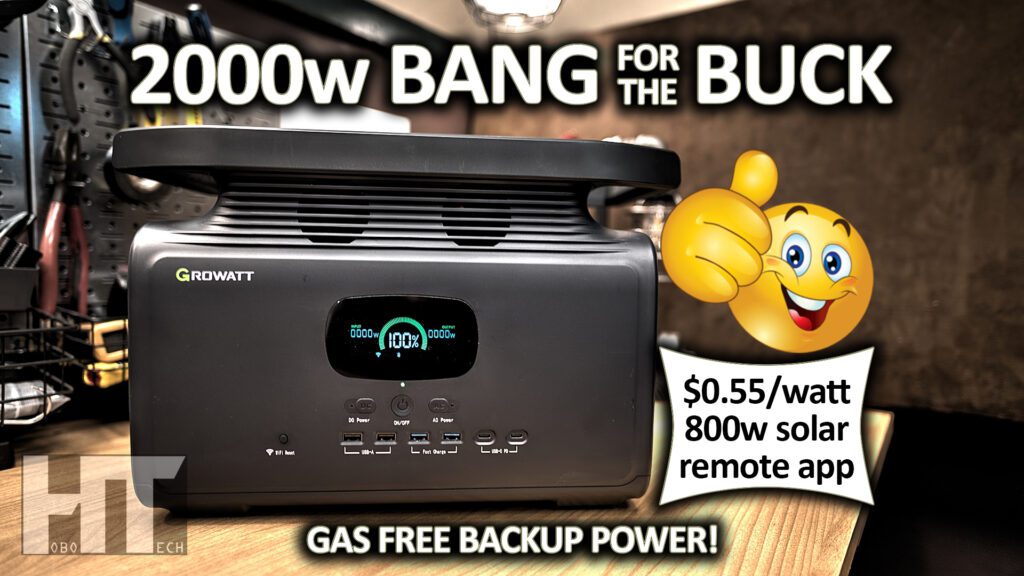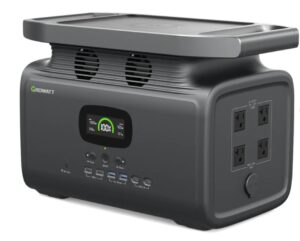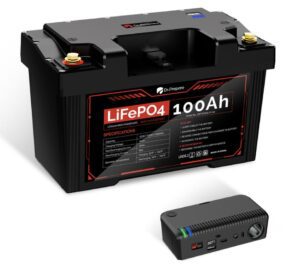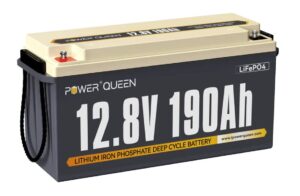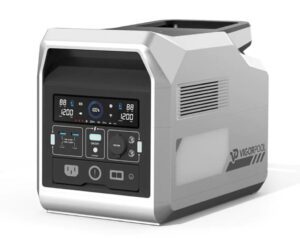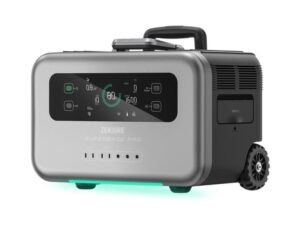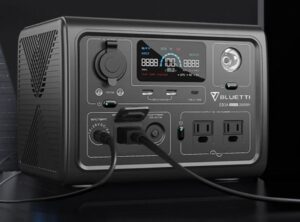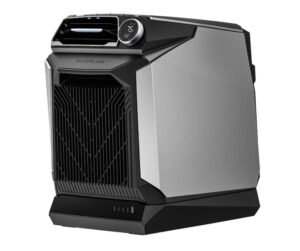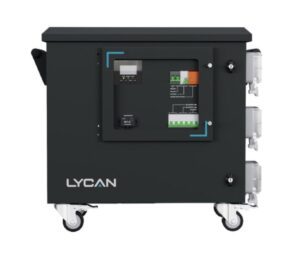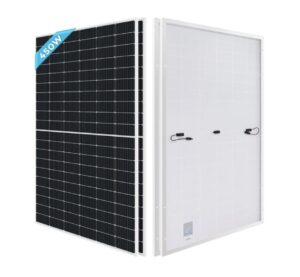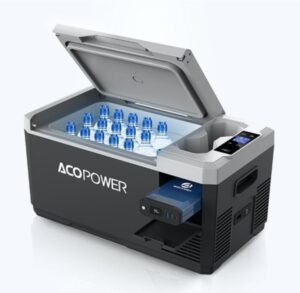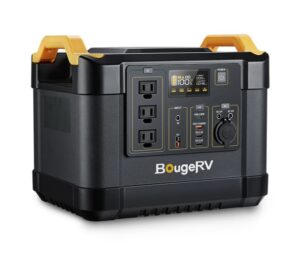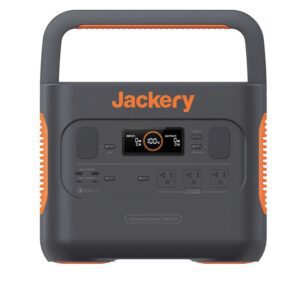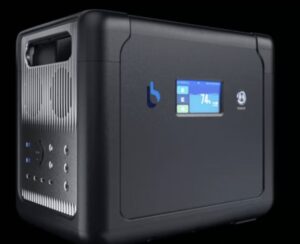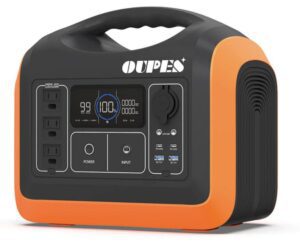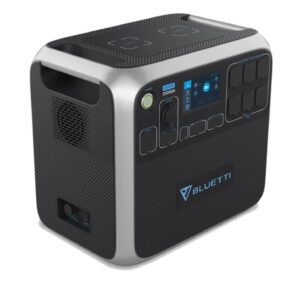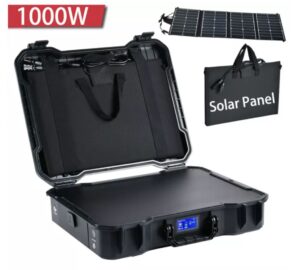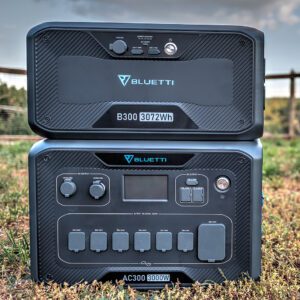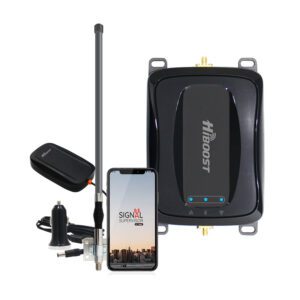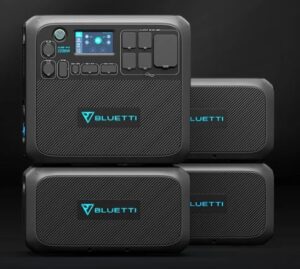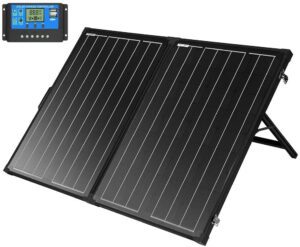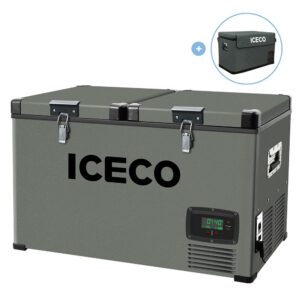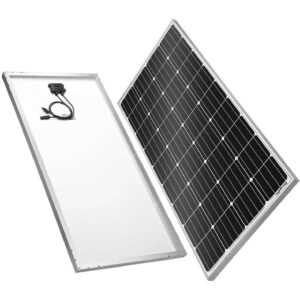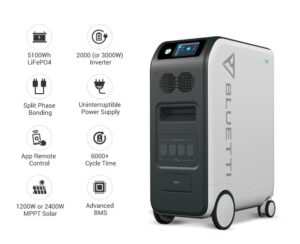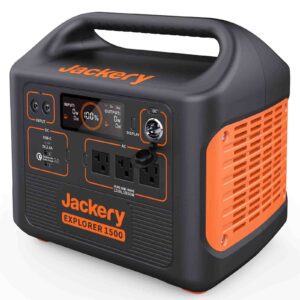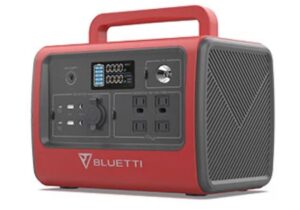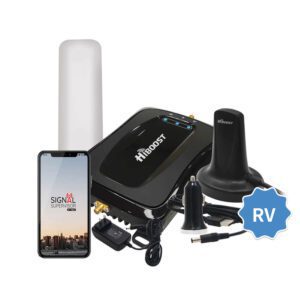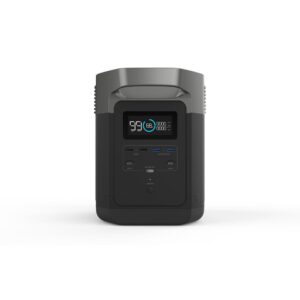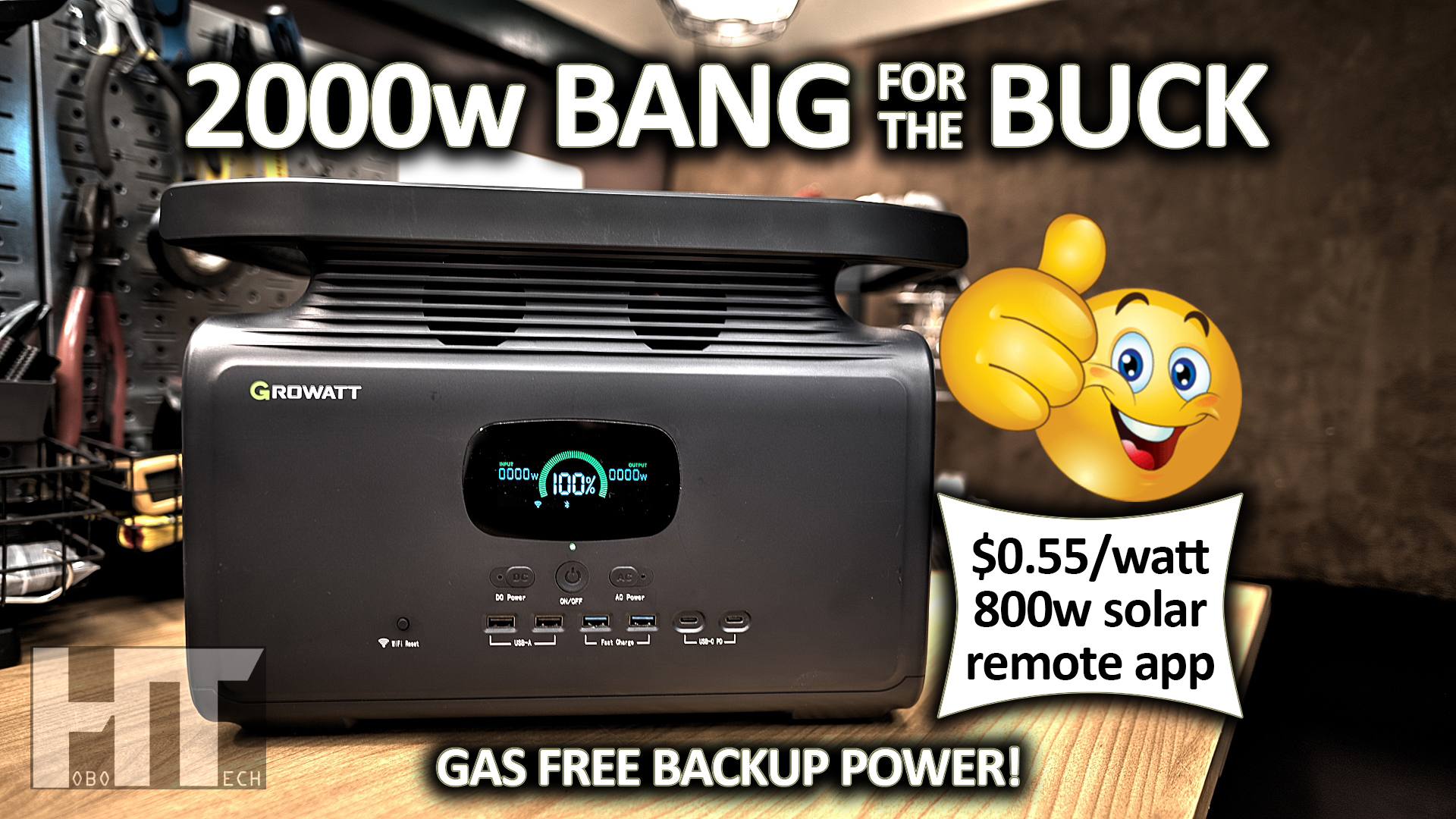
Watch The Video On YouTube
The Professor reviews Growatt’s debut solar power station the Infinity 1500 with 2000w inverter, 1512wh battery, 800w solar input, and remote APP support at a “best bang for the buck” price.
WATCH IT HERE
Intro
-
Growatt is well known for their low frequency inverters and has decided to delve into the crowded solar generator market with their own 2000 watt offering, the INFINITY 1500.
Quirks & Features
-
Battery Capacity/Tech/Cycles: 1512wh lithium ion battery rated 800 cycles to 80% capacity
-
Size/Weight: I’ll put the size at the bottom and here’s is what it weighed on my scale. 17 x 9 x11
-
Design/Display: The Infinity 1500 resembles a much happier alternate universe version of the Ecoflow Delta. Just think of it as the Bearded Spock of solar generators.
-
Inverter Size/Type (constant/peak) and #outlets: Interestingly, the Growatt enables the user to decide if they want a 1500w, 1800w, or 2000w pure sine inverter by choosing within their app. By limiting the inverter power you also limit the loudness of the cooling fans which we’ll test in a bit. You access this power via 4x 20A outlets on the side.
-
Ways To Charge (and times for each): It does offer the standard 3 ways to charge…
-
First by grid (or AC wall) power at a maximum of 1500w, also configurable within the app, and at that rate the Growatt can charge to 80% in under an hour or about 90 minutes to full.
-
Second by 12/24v vehicle which takes about 14 hours.
-
Finally, it supports 800w of solar through it’s MPPT controller with a surprisingly wide voltage range of 12v-100v at a maximum of 12A. At 800w you can top up the Growatt in just under 3 hours. The voltage range as tested is actually different than in the printed manual and we’ll review this in my testing coming up.
-
-
12v Output Types: The Infinity offers a single 12v cigarette lighter socket rated at 10A and is regulated at 13.6v
-
USB Output Types: As for USB outputs there are 6 total. You get a pair of standard USB outputs good for charging your dinosaurs, a pair of 18 QC ports, and a pair of 60w PD outputs. Note the power delivery ports are output only and can not be used to charge the Growatt.
-
Other Outputs: There is also a 15w wireless charging pad up top if your phone supports wireless charging
-
Other Features:
-
The Growatt does offer a basic 20ms UPS (or uninterruptable power supply) feature and we’ll demo that here in a bit.
-
Now because it does offer a UPS feature, it means up to 3 units can be chained together from the output of one to the input of another to essentially expand battery capacity. This does mean having the inverter running on each unit so it’s not really the most power efficient.
-
And while there is no built in flashlight good for flagging down UFO’s, Growatt does have their own app called “MyGro” that lets you remotely control the unit.
-
-
Warranty: Growatt does offer a 2 year manufacturer’s warranty on this product
Testing
-
DC Battery Capacity Test (time lapse): 1023wh/1512 for an abysmal 68%. Now, I didn’t notice until after I started editing this video that I had apparently left the WIFI and Bluetooth enabled during this test. I had also left the screen on permanently and the combo of those two parasitic loads over 10 hours could have affected the final results. So I did a last minute retest with those features off and at a slightly higher load and well, the results somehow were worse by about 40wh. So getting about 1000wh from the DC output seems to be a legit result.
-
AC Battery Capacity Test (time lapse): As for the AC capacity results it scored a far better 1230wh/1512 or 81% and this was on the maximum 2000w inverter setting with WIFI, Bluetooth and screen off.
-
Sine wave check under load: 119v/60hz
-
Inverter capacity test (max): 2400W
-
Cooling ability test (rated @ 5mins): pass 2000w (will not recharge if hot)
-
Temperature check:
-
Inverter fan noise db: 60
-
Max Charge Rate @ watts/volts: AC 1500w, DC 14v 105w, 100v 800w
-
Charging fan noise db: 50 slow, 56 fast
-
Simultaneous charging ability: yes 1500w favors solar = 800w solar + 700 AC
-
Pass thru / UPS: UPS passed laptop test
-
DC Output(s) Max Rate: 10A
-
12v output(s) regulated: 13.6v
-
USB output rate check: 60w pass
-
Wireless/other output: pass
-
Amp interference test: pass
My opinion
-
What do I think about the Infinity 1500? Well, for Growatt’s first offering it is certainly enough bang for the buck to make it to my recommended list. While there is nothing really game changing about the Infinity 1500, it does do everything well. You have a clean 2000w inverter with a 1500wh battery, ample USB ports of every flavor, wireless charging, an APP (which does need some blingification), and a UPS that switches fast enough for use with personal computers.
-
Unfortunately, that’s where the good stuff ends. I’m saddened by the 12v DC capacity results that I did verify with a retest. I know most folks aren’t going to use the 12v output on this but if that’s a major feature for you then the Growatt isn’t the most efficient choice. I really have no idea why the single 12v output on this consumes so much power. Fortunately, the inverter is great and rates about average numbers across all brands.
-
Since Growatt decided to raid the parts bin of Ecoflow, they have the exact same complaint as virtually the entire Ecoflow line of products when it comes to the sound level of their cooling fans. I’m afraid their just too darn loud. Fortunately, Growatt mends this somewhat by offering differing charge rates and inverter outputs in an attempt to mitigate some of the loudness. If you don’t mind turning everything down to minimal settings it will cut out 6db of noise or the equivalent of being about twice as far away. I think for most noise sensitive folks this makes it even a better choice than the Ecoflow especially at it’s rock bottom introductory price.
Pricing and competition
-
Product Price with current discounts:
-
About that rock bottom price … Retail the Infinity 1500 goes for $1299 but viewers of HOBOTECH of course get a special discount for a final price of $1099 (that’s only 55 cents per watt or 72 cents per watt hour). You need to use the code HOBOSFANS along with this link to get the special deal.
-
-
Main Competitor:
-
Since they share so many parts, the Growatt nearest competition is probably the Ecoflow Delta Max. While most of the specs are similar, the Ecoflow sports a slightly larger battery with a much higher price of $1899. The Jackery 1500 would be the next closest competitor size and price wise if it was still the year 2020, but in order to even touch the specs of the Growatt you’d need to compare the more current $2100 Jackery 2000 Pro. When comparing price and features of these competing NMC products the Growatt is practically a steal even at it’s regular $1299 price.
-
-
Recommended Solar Panel Type/Size:
-
The Growatt supports up to 800w of solar within a wide voltage range up to 110v and 12A. This lets you use just about any panels you want. If you need portable panels I’d go with the 200w Growatt panels. You can run 4 of those in series to max out this unit. If you want a more permanent solution, I’d recommend the BougeRV 180w or 200w panels or the Renogy 320w panels which can be found on hobotech.tv/amazon under “solar kits”.
-
-
If you’re interested, use this link with discount code HOBOSFANS for the best deal online. The Infinity 1500 is not available at any retail stores.
Growatt Infinity 1500
2000w Solar Generator
Use code HOBOSFANS
GO TO GROWATT
Bluetti PV420 420w
Portable Solar Panel
Use code HOBOPV420
GO TO BLUETTI
Dr. Prepare 100ah
LiFePO4 PowerMax Battery
Use code HOBO7
GO TO DR PREPARE
Power Queen 190ah
LiFePO4 Drop In Battery
Use code HOBO9 for $605 offer
GO TO POWER QUEEN
Vigorpool Captain 1200
UPS LFP Parallel SoGen
GO TO VIGORPOOL
ZENDURE SBP 2000
SOLAR GENERATOR
$100 OFF code HOBOSBP
GO TO ZENDURE
BLUETTI EB3A UPS
SOLAR GENERATOR
Use code HOBOEB3A
GO TO BLUETTI
RUNHOOD POWER
MODULAR GENERATOR
GO TO RUNHOOD
ECOFLOW WAVE
BATTERY POWERED A/C
Use code HOBOTECHWAVE
GO TO ECOFLOW
RENOGY LYCAN 5000
4800wh UPS Waterproof
Solar Generator
12% off with code HOBOLYCAN1
GO TO RENOGY
—
GOT RENOGY SOLAR PANELS?
Renogy 450w solar panels: https://hobos.cc/ren450
Renogy 175w solar panels: https://hobos.cc/ren175
Use code HOBOPANEL for 10% off
ACOPOWER
LiON Mini Fridge
$226 Super Early Bird!
GO TO ACOPOWER
BougeRV 1200w
1100wh SoGen
$719 code HOBOTECH10
GO TO BOUGERV
Jackery 2000 Pro
2200w UPS SoGen
$2069 code HOBOTECH
GO TO JACKERY
ICECO JPPRO 12v Fridge
Only $479 for a limited time!
GO TO ICECO PAGE
PECRON E3000 3108wh
Only $1899 for a limited time!
Use code HOBOE3000 until May 7th
GO TO PECRON SITE
BIGBLUE CELLPOWA 2500w
Only $1099 for a limited time!
GO TO BIGBLUE SITE
BLUETTI EP500 PRO
See the review?
GO TO BLUETTI POWER SITE
//-AC300 & B300 Deals-//
B300 (solo) Use code HOBOB300 https://bit.ly/3hyROWi
AC300+B300 Use code HOBOAC3001B https://bit.ly/398DDm1
AC300+2xB300 Use code HOBOAC3002B https://bit.ly/3Aq3OAs
AC300+2xB300+3xPV200 Use code HOBOAC300COMBO2 https://bit.ly/3tJHFuD
2xAC300+2xB300+P030A Use code HOBOAC300COMBO1 https://bit.ly/3lpWoXU
AC300+4xB300 Use code HOBOAC3004B https://bit.ly/3tVd1Pb
2xAC300+4xB300+P030A Use code HOBOAC300COMBO3 https://bit.ly/2Xmd8XL
2xAC300+4xB300+6xPV200+P030A Use code HOBOAC300COMBO4 https://bit.ly/2XmDDfp
//-AC200Max & B230 Deals-//
B230 (solo) Use code HOBOB230 https://bit.ly/3EiO4Sk
AC200MAX Use code HOBO200MAX https://bit.ly/3EiOBni
AC200Max+B230 Use code HOBOMAXB230 https://bit.ly/3znZzEB
AC200Max+3PV200 Use code HOBOMAX3PV2000 https://bit.ly/39b8lLs
AC200Max+2*B230 Use code HOBOMAX2B230 https://bit.ly/3k9D7ue
AC200Max+2*B230+3*PV200 Use code HOBOMAXCOMBO https://bit.ly/3kb2A6w
//-AC200P-//
AC200P Use code HOBO200P https://bit.ly/3JSgGDR
AC200P+3xPV120 Use code AC200PV120 https://bit.ly/3555Yes
AC200P+3xPV200 Use code AC200PV200 https://bit.ly/3t9pPBg
//-UNDER 1000w-//
AC50S Use code HOBO50 (or HOBO50OR) https://bit.ly/3skt7me
EB55 Use code HOBO55 https://bit.ly/3hfqw6x
EB70S Use code HOBO70S Use code HOBO100 https://bit.ly/3C311iF
EB150 Use code HOBO150 https://bit.ly/3pgyr85
EB240 Use code HOBO3000 https://bit.ly/3Ka7drZ
EB55+PV120 Use code PVEB55 https://bit.ly/3BMIpDn
EB70S+PV200 Use code EB70S30 https://bit.ly/3sfYu1c
EB150+2xPV120 Use code EB150PV120 https://bit.ly/3t7PmuM
EB240+2xPV120 https://bit.ly/33OMk61
//-SOLAR PANELS-//
PV120 Use code HOBO100 https://bit.ly/3LZXAO3
PV200 Use code HOBO200 https://bit.ly/3vgmjrq
PV350 Use code HOB350 https://bit.ly/3hIr1Gs
//-ACCESSORIES-//
DC Charging Enhanncer(D050S) Use code HOBOENHANCER https://bit.ly/2Xs3mnd
Fusion Box Pro(P030A)Use code HOBOFUSION https://bit.ly/3AcUQqs
PV voltage step down module(D300S) Use code HOBOD300S https://bit.ly/3nByuv1
D050S+3*PV200+B230 Use code HOBOENHCOMBO1 https://bit.ly/3nzNKJ9
D050S+3*PV200+B300 Use code HOBOENHCOMBO2 https://bit.ly/2XhAuh1
–ALLPOWERS MONSTER PRO–
5000wh UPS LFP SOGEN
Only $3399 for a limited time!
That’s 67 cents per watt hour! Cheap!
GO TO ALLPOWERS SITE
OUPES 1200w Solar Generator
Only $765 for a limited time!
Use Code HOBOTECH for 15% off SITE WIDE
GO TO OUPES SITE
GET THE BLUETTI AC200P at the LOWEST PRICE EVER!
BLUETTI AC200P 2000wh LiFePO4
Only $1498 from BLUETTI
https://bit.ly/2T3xMJK
Use Code HOBO200P
or purchase from Amazon + tax support & Bezos Yacht Fund
PLEASE SUPPORT US BY BUYING DIRECT FROM BLUETTI
BEZOS DOESN’T NEED ANOTHER YACHT!
MONTEK X-1000 Water Resistant 1000w SoGen
MONTEK X-1000 (with 80w panel): http://shrsl.com/3cm8o use code HOBO1000 for $100 off!
ACOPower LiONCooler Pro Solar Fridge
https://bit.ly/3Dp5hYH
ANKER 521 256wh LFP Power Station
https://amzn.to/3nZUT51
BLUETTI AC300
3000w Solar Generator
“BEST SOGEN AVAILABLE IN 2021!”
ON SALE NOW!
Use the codes / links below!
//-AC300 & B300 Deals-//
B300 (solo) Use code HOBOB300 https://bit.ly/3hyROWi
AC300+B300 (review bundle) Use code HOBOAC3001B https://bit.ly/398DDm1
AC300+2xB300 Use code HOBOAC3002B https://bit.ly/3Aq3OAs
AC300+2xB300+3xPV200 Use code HOBOAC300COMBO2 https://bit.ly/3tJHFuD
2xAC300+2xB300+P030A Use code HOBOAC300COMBO1 https://bit.ly/3lpWoXU
AC300+4xB300 Use code HOBOAC3004B https://bit.ly/3tVd1Pb
2xAC300+4xB300+P030A Use code HOBOAC300COMBO3 https://bit.ly/2Xmd8XL
2xAC300+4xB300+6xPV200+P030A Use code HOBOAC300COMBO4 https://bit.ly/2XmDDfp
//-AC200Max & B230 Deals-//
B230 (solo) Use code HOBOB230 https://bit.ly/3EiO4Sk
AC200MAX Use code HOBO200MAX https://bit.ly/3EiOBni
AC200Max+B230 Use code HOBOMAXB230 https://bit.ly/3znZzEB
AC200Max+3PV200 Use code HOBOMAX3PV2000 https://bit.ly/39b8lLs
AC200Max+2*B230 (review bundle) Use code HOBOMAX2B230 https://bit.ly/3k9D7ue
AC200Max+2*B230+3*PV200 Use code HOBOMAXCOMBO https://bit.ly/3kb2A6w
//-Other Models-//
AC200P 2000wh https://bit.ly/2T3xMJK use code HOBO200P
EB70 700w LiFePO4 https://bit.ly/2SfeEIK use code HOBO70
EB55 700w LiFePO4 https://bit.ly/3CmRHFq use code HOBO55
AC50s 500wh https://bit.ly/3uNec1O use code HOBO50
AC50s (orange) https://bit.ly/2T1TUEx use code HOBO50OR
EB240 2400wh https://bit.ly/3cjMseB use code HOBO3000
EB150 1500wh https://bit.ly/3plw3vL use code HOBO150
//-Solar Panels-//
BLUETTI PV200 200w Solar Panel https://bit.ly/31b1n8o use code HOBO200
BLUETTI PV120 120w Solar Panel https://bit.ly/3Emrtn8 use code HOBO100
//-Accessory Deals-//
DC Charging Enhanncer(D050S) Use code HOBOENHANCER https://bit.ly/2Xs3mnd
Fusion Box Pro(P030A) Use code HOBOFUSION https://bit.ly/3AcUQqs
PV voltage step down module(D300S) Use code HOBOD300S https://bit.ly/3nByuv1
D050S+3*PV200+B230 Use code HOBOENHCOMBO1 https://bit.ly/3nzNKJ9
D050S+3*PV200+B300 Use code HOBOENHCOMBO2 https://bit.ly/2XhAuh1
HIBOOST BOOSTERS!
-> https://bit.ly/3DLf0Kn <-
Use code HOBO20 for 20% off the OTW, RV, and Car boosters.
Use code HOBO15ALL for 15% off everything else SITE WIDE! (including home boosters!)
NEW BLUETTI AC200Max !
AC200Max: use code HOBO200MAX https://bit.ly/3mjdKIa
AC200Max+B230: use code HOBOMAXB230 https://bit.ly/3xZJCUg
AC200Max+2*B230: use code HOBOMAX2B230 https://bit.ly/3z3L8Gh
AC200Max+2*B230+600w solar: use code HOBOMAXCOMBO https://bit.ly/3D1SEUr
AC200Max+600w solar: use code HOBOMAX3PV2000 https://bit.ly/2WbTMnS
BROWSE OTHER DEALS: https://bit.ly/3ydwhId
SUNGOLDPOWER 130w v.2 Suitcase Kit
is BACK !
Use code HOBOTECH at checkout
GET IT AT SUNGOLDPOWER
Watch the original V.1 review video HERE
Amazon (no discount): https://amzn.to/3iJFRht
JACKERY EXPLORER 1000
GET IT AT JACKERY (save tax)
use code HOBOTECH at checkout!
Amazon: https://amzn.to/38TEJiR
CANADA https://amzn.to/3d7ll5g
PLEASE SUPPORT US AND NOT BILLIONAIRES BY BUYING DIRECT!
ECOFLOW DELTA PRO
3600w LiFePO4 UPS Power Station
CHECK IT OUT HERE
ICECO Refrigerators
->CLICK HERE for BEST DEALS!<-Use code HOBOTECH at checkout!
BOUGERV DEALS!
BOUGERV 180w Solar Panels
Use code HOBOTECH at checkout for 12% off the ENTIRE Solar Catalog!
Get BOUGERV 180 WATT SOLAR PANELS HERE
BougeRV Cheap REFRIGERATORS!
Use code HOBOTECH20 for 20% off all models!
53qt use code HOBOTECH90 for $90 off!
BUY DIRECT FROM BOUGERV
Wanna buy Bezos another Yacht instead?
53qt (Canada) https://amzn.to/332dgeX use code V7DIVCAB
The 5100wh Home Backup BEAST!
BLUETTI EP500 / EP500 PRO
GET IT NOW
JACKERY EXPLORER 1500
GET IT AT JACKERY (save tax)
Amazon +tax: https://amzn.to/3sUvbyU
PLEASE SUPPORT US AND NOT BILLIONAIRES BY BUYING DIRECT!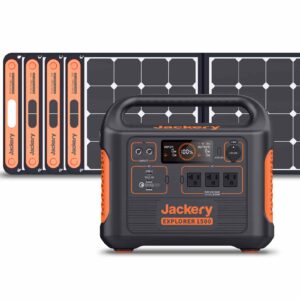
JACKERY SG1500 + 4x100w Panels
GET IT AT JACKERY (save tax)
on Amazon +tax: https://amzn.to/3rQCFld
PLEASE SUPPORT US AND NOT BILLIONAIRES BY BUYING DIRECT!
BLUETTI EB70 700w Solar Generator
Use Code HOBO70 for $100 off
GET IT AT BLUETTI (save tax)
Only red & gray available. Mint green is sold out.
PLEASE SUPPORT US AND NOT CORPORATE BILLIONAIRES BY BUYING DIRECT.
AMAZON TAKES UP TO 25% FROM SELLERS!
HIBOOST RV BOOSTER
GET IT AT HIBOOST
Use code HOBO20 for 20% OFF all mobile units!
JACKERY 300 Version 2.0!
Get it at the new low price of $299!
Jackery Direct (save tax) https://bit.ly/2QEQ9AB
On Amazon (+tax): https://amzn.to/3lCbbhl
PLEASE SUPPORT US BY BUYING DIRECT FROM JACKERY
BEZOS DOESN’T NEED THE HELP!
ALP 1000w Generator + Free Tank Hose
Get the ALP in several color choices for $499
1) Add generator to cart: ALP Generator
2) Add hose to cart: Generator Hose
3) Use code HOBO1020 at checkout!
ECOFLOW DELTA 1300 $1149
EcoFlow Store Page!
Use code EFHOBOTECH50 !
BLUETTI AC50S Solar Generator
— ->CLICK HERE for BEST DEAL!<- —
Use code HOBO50
Or buy on Amazon: https://amzn.to/36fwWg0
ICECO JP Series Refrigerators 20% OFF!
— ->CLICK HERE for BEST DEAL!<- —
Use code HOBOTECH at checkout!
HIBOOST 4G Signal Boosters
–> CLICK HERE FOR BEST DEAL! <–
Use code 2CX3RBZJ for 10% off SITE WIDE!
NEW! Use code XRMJT8WE for 20% off RV CELL BOOSTER!
ACOPOWER LiONCooler: https://www.acopower.com/
Use code HOBOTECH at checkout for 10% off!
SUNGOLDPOWER 130w Suitcase Kit is BACK
for $208! Use code 15HOBOTECH
Watch the original review video HERE
–> CLICK HERE for Amazon Page <–
Using the preferred “Best Deal” links helps support the channel!
Visit hobotech.tv/amazon for ALL products and discounts!
HOBOTECH is viewer supported. When you buy through these links we may earn an affiliate commission. As an Amazon Associate I earn from qualifying purchases.
#reviews #generators #offgrid

